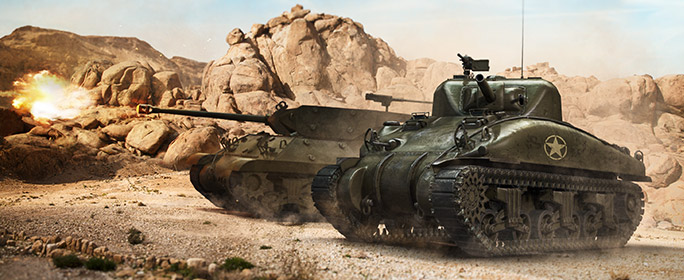 Commanders!
Commanders!
The Battle of Kasserine Pass, which took place between 19 and 25 February 1943, is considered to be one of the most significant events of the Tunisia Campaign. Not only was the battle the first large-scale meeting between the American and German forces, but its outcome also led to some very important tactical changes in the Allies’ combat doctrine. To commemorate this historical event, we have created a special closely themed around the battle! From 21 February 06:10 until 24 February 06:00 CET (UTC+1) expect the following:
Triple Experience for the First Victory of the Day
Experience is what makes us learn, experience is what makes us strong!
50% discount on the following vehicles:
|
|
|
|
|
|
|
|
|
30% discount on the following vehicle:
|
Missions
|
Battle of Kasserine Pass: Germany | |
|---|---|
|
Reward |
2 x Chocolate |
|
Requirements |
|
|
Conditions |
|
|
Battle of Kasserine Pass: Allies | |
|---|---|
|
Reward |
2 x Automatic Fire Extinguisher |
|
Requirements |
|
|
Conditions |
|
|
Battle of Kasserine Pass | |
|---|---|
|
Reward |
1 day Premium Account |
|
Requirements |
Once per account |
|
Conditions |
Accomplish the missions Battle of Kasserine Pass: Germany and Battle of Kasserine Pass: Allies at least 3 times each |
History
The Battle of Kasserine Pass took place between February 19 and 25 1943 during the Tunisian Campaign of World War II. This battle marked the first large-scale meeting of American and German forces during the war.
In early 1943, the North African Campaign was rapidly approaching its end with growing Allied victories over the Axis forces. During the Battle of Kasserine Pass, the Axis forces proved that they still had some fight left in them and weren’t going to go down easily.
The Allied push began in November 1942, with British and American forces landing along the coast of Morocco and Algeria as part of Operation Torch. As this was the first large-scale engagement in which the Allied forces were working together in this campaign, issues with coordination and cooperation between the Allied forces arose. They had an overall commander in theory, but not in practice. Disagreements became common. By contrast, the German structure was still rigid and organised, with Rommel having overall responsibility. In addition, the Americans were unused to both the terrain and the enemy. The end result was disorganisation throughout the Allied lines.
The British took Tripoli under General Bernard Montgomery in late January 1943, enabling them to push on eastwards towards the Mediterranean Sea and severely endanger Axis tactical assets. This instigated Rommel’s response, which culminated with the Battle of Kasserine Pass.
Kasserine Pass is a two-mile long valley through the mountains, and it was defended by American troops. Rommel determined that this location was the weakest point in the Allied defensive line. His first strike was repulsed, but with tank reinforcements Rommel broke through on February 20th, inflicting huge damage on the U.S. forces.
The engagement lasted for five days, with the Axis forces continuing to deal devastation with their tanks. It was only when the Allies managed to rally together to deliver a massive artillery strike that the German offensive was finally halted. Rommel realised that it was time to withdraw, and pulled his troops out. The U.S. forces then finally took the pass, but at a huge cost.
The Battle of the Kasserine Pass could be called an Axis tactical victory and Erwin Rommel's last great achievement in North Africa. Meanwhile, the Americans learned a lot from the experience. Although the battle had gone badly for them, they were able to assess what had gone wrong and make significant improvements to their methods and tactics for the future.
Roll out, Commanders!










